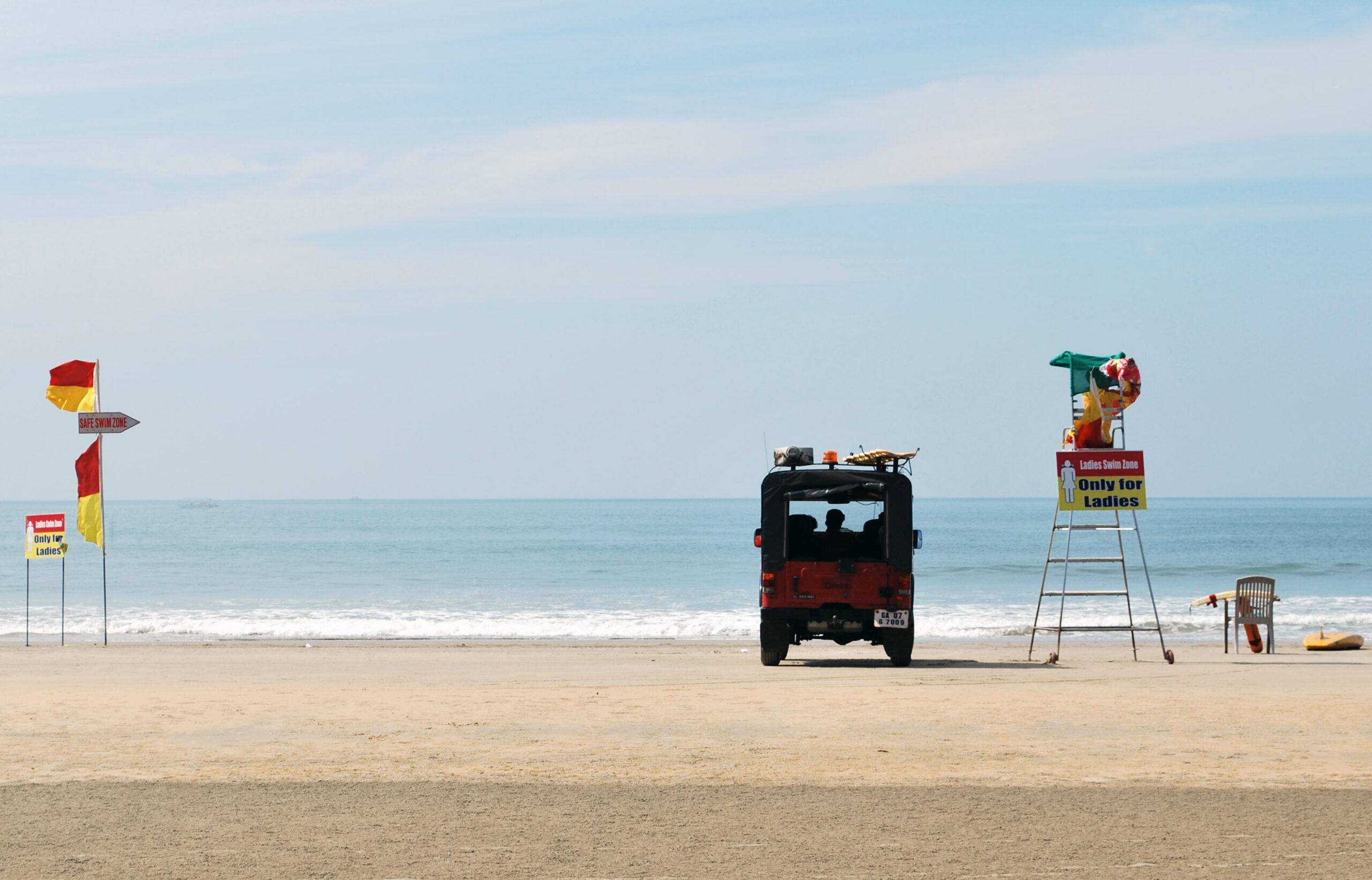With the monsoon season having come to an end and post-monsoon showers receding, Drishti Lifesaving, the state-appointed professional lifeguard agency will resume setting up of safe swim-zones on Goa’s beaches from the 9th of October 2017.
At the start of the monsoon season, the lifeguard body had issued an advisory instructing visitors to the beach not to venture into the sea during the monsoon months extending from June till the end of September. Red flags are erected at all the beaches indicating that they were no-swim zones, which essentially meant that the beaches are not meant for swimming. Even wading into the waters is not advisable during the monsoon months.
Starting 9th October 2017 all beaches will be open to swimming. Drishti maps the weather and sea conditions each morning and accordingly sets up safe swim zones along the beaches which are manned by the agency.
Drishti’s 600 -strong lifeguard force man Goa’s beaches through the year. Most of the beaches across Goa are safe to swim in however; Drishti advises beach goers and swimmers to adhere to some basic safety measures. Swimmers should ideally swim only in the swim zones which are marked with red and yellow flags by the Drishti lifeguards. Non swim zones are marked with red flags and are not meant for swimming. Anjuna however, being a rocky beach does not have a swim zone. Additionally, there are signage at the entrance of every beach which list down the kinds of flags and what they mean, instructions and safety tips.
Drishti lifeguards closely monitor 22 beaches across South Goa and 16 beaches across the North Goa stretch from 7:30 am to 6:00 pm (until sunset).
South: Baina, Bogmollo, Velsao, Hollant, Arrosim, Majorda, Utorda, Betalbatim, Colva, Benaulim, Taj – Benaulim, Varca, Zalor, Cavellosim, Mobor, Agonda, Pallolem, Patnem, Rajbagh, Talpona, Galgibag and Pollem.
North: Querim, Arambol, Ashwem and Mandrem, Morjim, Vagator, Anjuna, Baga-1, Baga-2, Calangute, Candolim-1, Candolim-2, Sinquerim, Miramar, Vaiguinim –Donapaula, Siridao /Bambolim and Sweet Water Lake.
The Goa government shuts down the beaches for swimming and all water sports activities during the monsoon months from June to September each year as the sea during this season tends to be extremely rough and choppy. Goa also observes a 61-day fishing ban from 1st June to 31st July where nearly 1,500 trawlers pull their nets off the territorial waters for the entire period of the ban.
#ListenToYourLifeguard: Safety tips by Drishti, Goa’s lifeguard agency:
- Keep a very close eye on children while on the beach and do not allow children to venture into the waters unattended, no matter how shallow it may be.
- It is not advisable to venture into the water between 12 noon and 4pm. The sea is usually very rough in the afternoon because the wind pick up is more during this time.
- Avoid choosing a secluded beach which is not manned by a lifeguard. Instead pick a beach that is surrounded by people and never swim alone. Lifeguards are usually manning these areas.
- Stay alert as lifeguards while patrolling make announcements to alarm and educate people via the Public Address System put up on the jeeps.
- Do not get onto the rocks during low tide because the rocks get a lot more slippery and mossy
- If under the influence of alcohol make sure you do not venture into the water.
- Always read and obey the safety signs found at the main entrance of the beach.
Image credit: David Waumsley.
This article has not been not been edited by ItsGoa staff.


